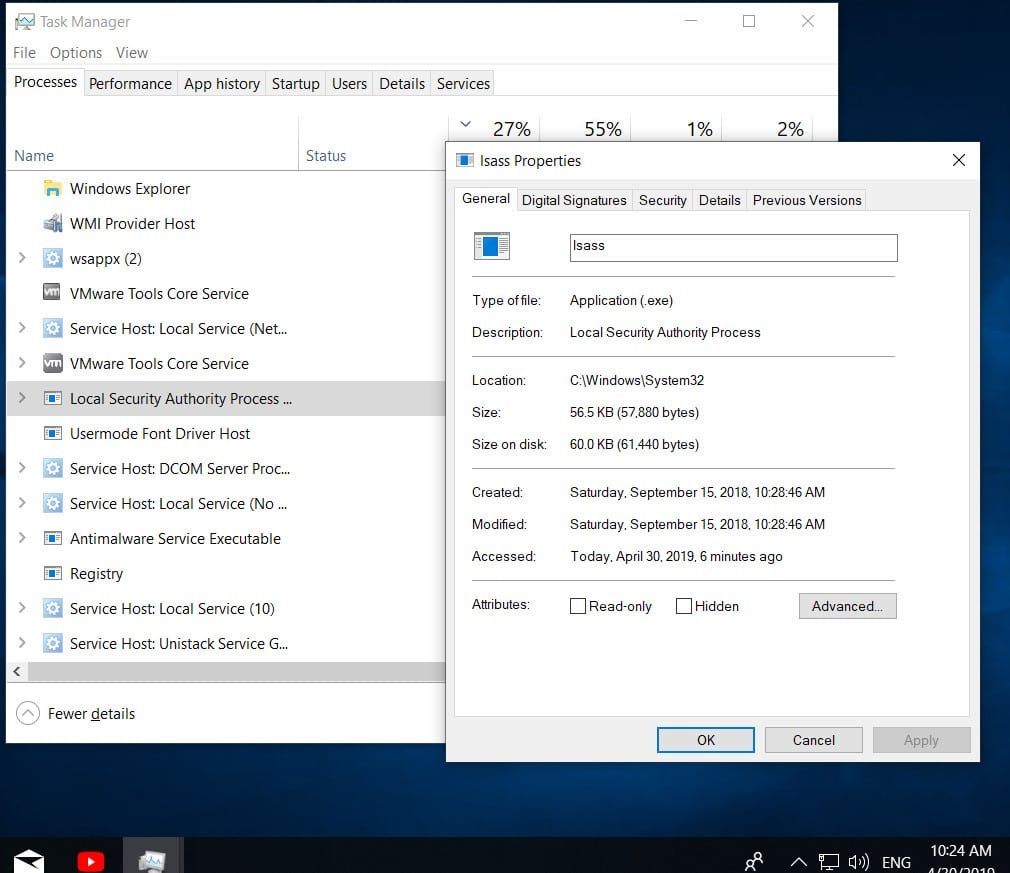
What is LSASS.exe process and how LSASS.exe works in Windows 10
You may have seen a service in the Task Manager in the Local Security Authority Process, with properties named lsass.exe. This is an important executable file in Windows 10 that handles many operations performed under the Windows operating system (OS) and serves for system security. Sometimes you may misinterpret this as a virus due to the .exe extension. Let’s look at the details associated with lsass.exe and its working principle.
What is lsass.exe in Windows 10
Lsass.exe means the local security subsystem service, where .exe indicates that it is an executable file. It works as a component of the Windows 10 security policy, such as checking the user on the server, changing the password, and authenticating the user during login or logout. lsass.exe is activated when winlogon.exe starts, and if the password is correct, it transmits permissions, or shows a message that the password does not match. The location of the Lsass.exe file is always the path C: \ Windows \ System32.
Is lsass.exe a virus?
No, lsass.exe is not a virus, it is an official file from Microsoft Corporation. You do not need to worry about any damage from this process if it is not damaged. Details lsass.exe following:
File description – Local Security Authority Process (Local Security Center).
The product name of the application is Microsoft Windows operating system.
Copyright – Microsoft Corporation. All rights reserved.
The size is 56.6 KB.
English language.
The original file name is lsass.exe.

Related posts :
WINLOGON.EXE – WHAT IS THIS PROCESS IN WINDOWS 10/7
SIHOST.EXE IN WINDOWS 10 – WHAT IS IT AND HOW IT WORKS
How does lsass.exe work in Windows 10?
lsass.exe in Windows 10 is the main system file that participates in root. If your system reboots again, this is due to damage to the lsass.exe file or there may be a password error. The executable is known to work in four different ways in your computer.
File System Encryption (EFS) – This file helps in processing and storing the encrypted file on your desktop. Encryption is a means of encoding information so that only an authorized user can enter it. You can read more about EFS encryption.
CNG key isolation (keyiso) – Works as a data protection process for private keys and a cryptographic file. If the CNG key isolation does not work, the Extensible Authentication Protocol cannot be initialized.
Security Account Manager (SamSs) —It helps to reduce data crash when transferring a signal from one server to another.
Credential Manager – Software also works to control the Internet Protocol when it is connected to a network.
How to recognize lsass.exe virus or not?
Sometimes malware developers create a file with the same name for the purpose of cheating, but you can easily distinguish the original lsass.exe file from the questionable one. If the file with the name lsass.exe is not in the path C: \ Windows \ System32, then this is already a big doubt about its originality, and you should delete it. To check this, simply open the Task Manager and go to the “Processes” tab. Here you can view a list of all executable files. Find the Local Security Authority Process, right click on it, and then click Open File Location. You will be transferred to the C: \ Windows \ System32 directory, and you will see lsass.exe there. If you are transferred to another place, then most likely this is malware. A virus similar to the lsass.exe service can heavily load the processor.

Should I disable lsass.exe in Windows 10?
As mentioned above, lsass.exe is a Windows security management program; there is no need to deactivate this file. You simply can not delete this file in Windows 10, as this may cause damage to the system.



